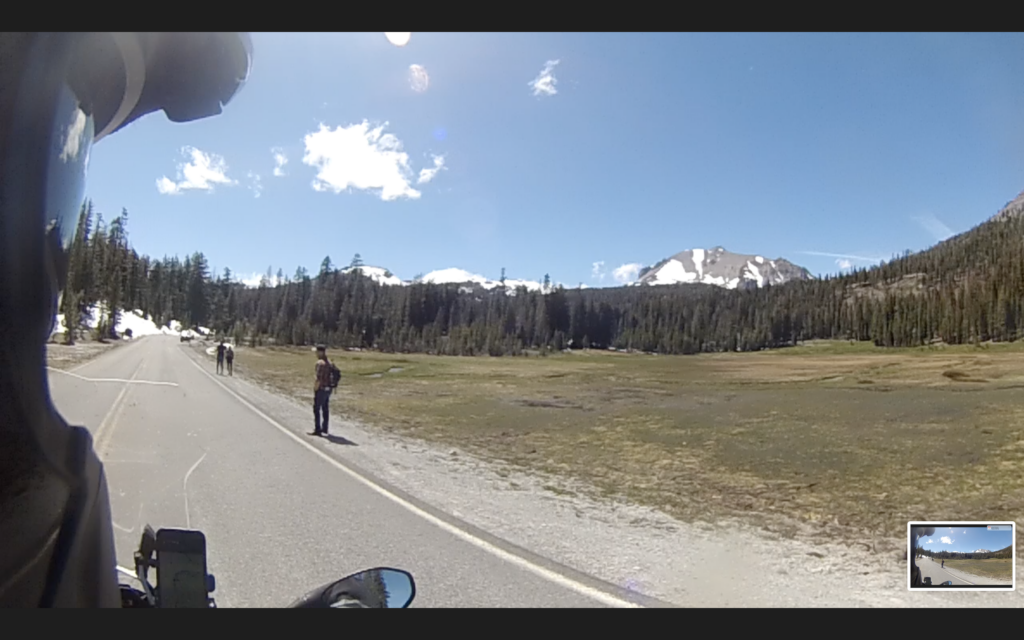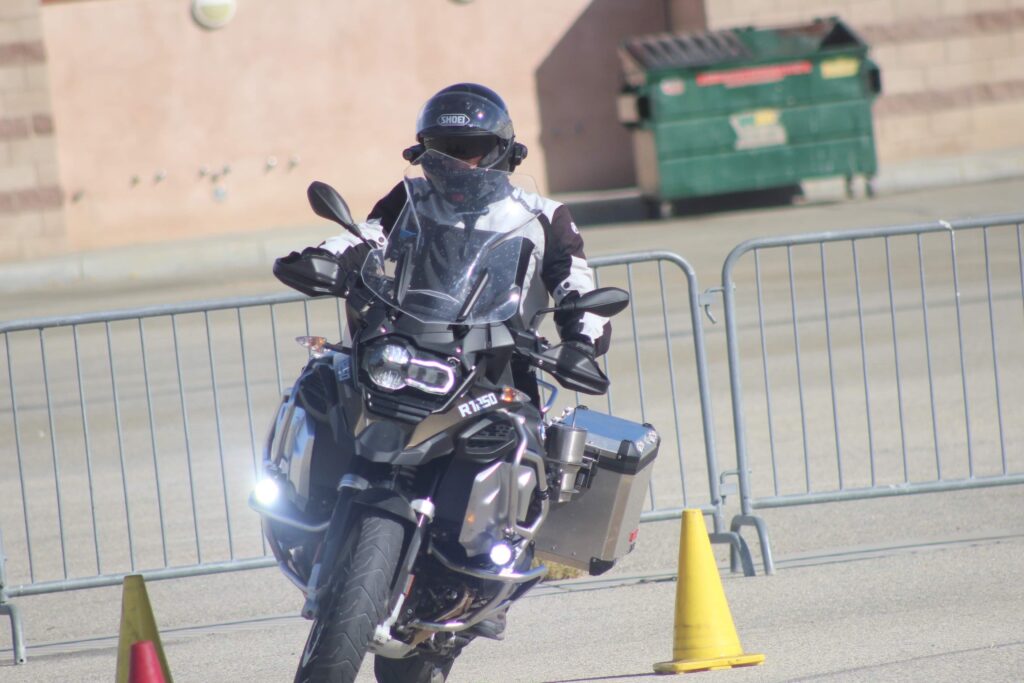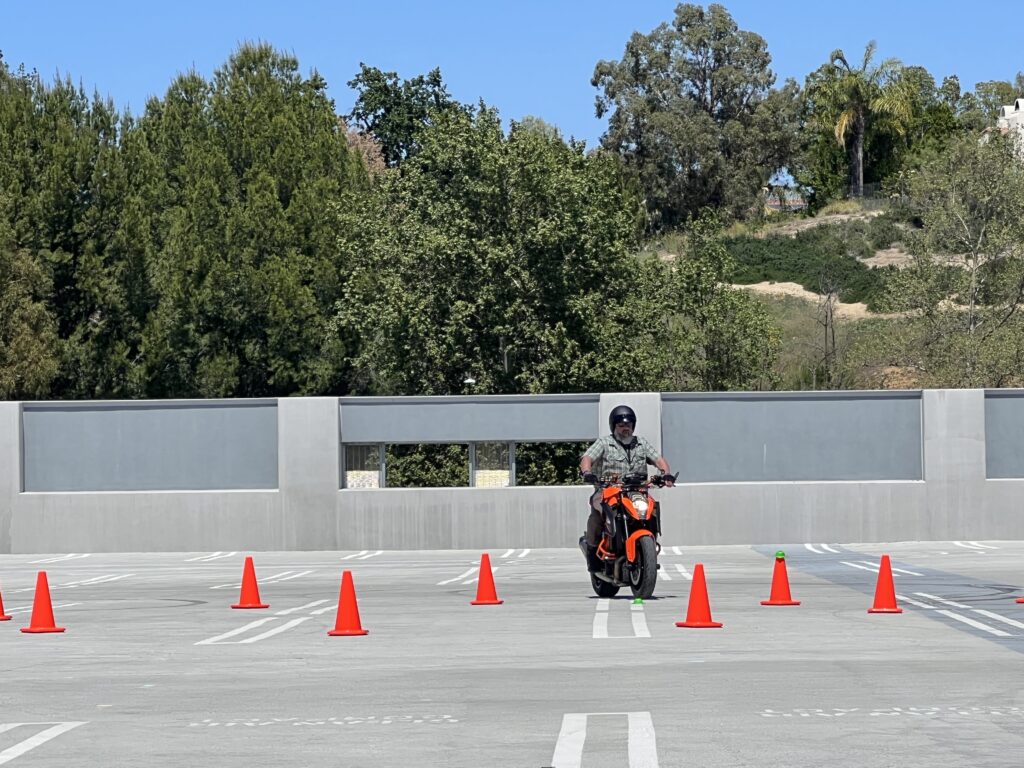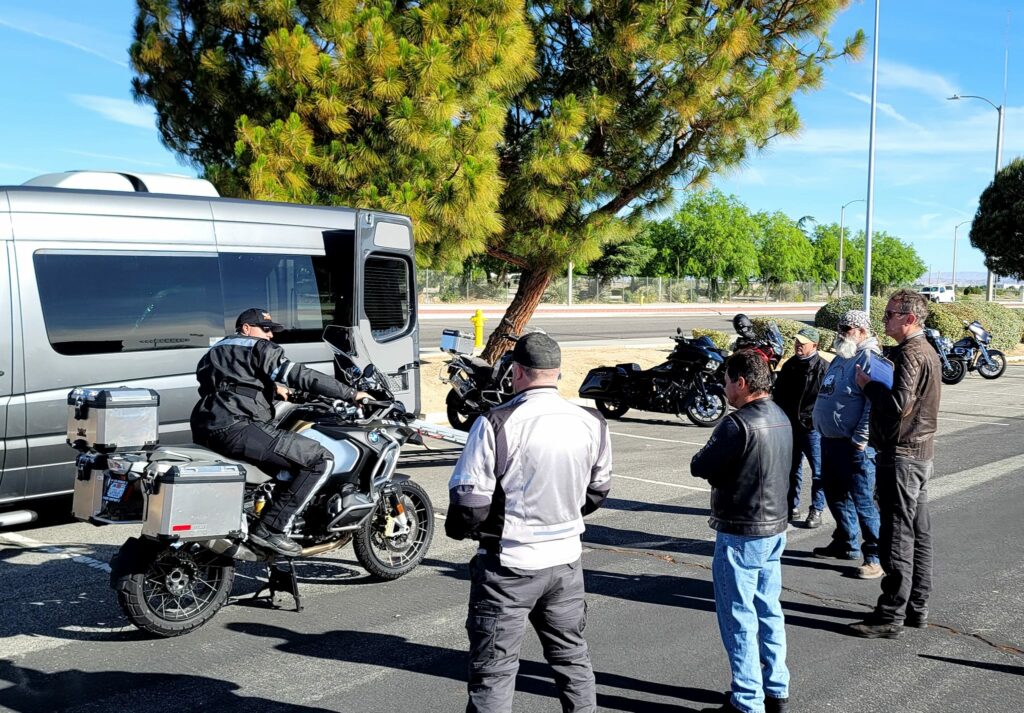Every time we get on a motorcycle, there is a high risk of being involved in a motorcycle accident. According to statistics, you are between 22% and 38% more likely to be involved in a motorcycle than a car accident. There are multiple ways we can significantly reduce those numbers, including scanning, playing the “what if” game, practice, and training.
Scanning
The best way to not get into a bad situation is to scan around us. We should constantly be scanning in front of us, sides of us, and behind us. Pay attention to what vehicles are doing around you. If you’re paying attention to what’s happening around you, you’re less likely to get into a bad situation. If you scan ahead and realize you are about to get into a bad situation, you will have more time to react, whether slowing down, speeding up, swerving, changing lanes, turning, etc.


Besides the apparent objects, there are other obstacles you may encounter while riding—changes in pavement traction, vehicle fluids, ice, and water. We won’t always see every type of obstacle on the road, but we can better prepare by paying attention to what’s on the ground. Also, pay attention if there are darker spots on the road and changes in the asphalt color. If there is a change in the asphalt color, your traction could be reduced, or it could get better.
If you see something hazardous, don’t be afraid to contact your local law enforcement agency. Call your local non-emergency number and tell them what is going on. They will dispatch either a police officer or notify public works.
Playing the “What If” Game
The best way to get out of a sticky situation is to be ready for anything. As you’re coming up to an intersection, ask yourself, “What if this car makes a left turn in front of me?” Well, if you’re 500’ away, you will have many options. What if you are only 200’ away? What if you are only 100’ away? What would your choices be? Your reaction time will always depend on speed and the hazard’s distance. The faster you go, the less time you have to respond to something on the road. Even if you have plenty of time to react to a hazard, if you don’t know what you should do.

Practice
I put about 2500 miles a month on motorcycles. I still spend 15-20 minutes a week practicing different skills. I work on my maximum braking and swerving the most. You don’t have to spend hours every day practicing, but spending a little time each week or even once a month is a great way to reduce your chances of being involved in a motorcycle accident. Work on the skills that you struggle with or want to become better at doing.

Training
I love doing motorcycle training. You don’t know what you don’t know until you take some training courses. Whether you just started riding or have been riding for 50-plus years, you can always learn something. No matter how many miles you have on motorcycles, you can learn something new. I have met many riders who come to a training course and thought they had it all figured out. Suddenly, they drop their motorcycle and are putting their foot down to avoid dropping the motorcycle. Most of the riders change their mindset, start focusing on what they don’t know, and become much better in just an eight-hour riding course.

When you feel like you know everything about motorcycle riding, it is time for you to get off the bike because you’re going to get yourself or someone else hurt or killed. There is always something to learn. Professional motorcycle riders take hundreds if not thousands of training courses every year.

We should never depend on other vehicles on the road to keep us safe. The only person we can depend on is ourselves. People in vehicles are so distracted that most of them have no idea what is going on around them. The more we are scanning, playing the “what if” game, practicing, and training, the less likely we will be involved in a motorcycle accident. Never depend on anyone else to keep you safe!
Follow the blogger, Sheldon Sherman on Facebook, Instagram, and at www.proriderantelopevalley.com.










